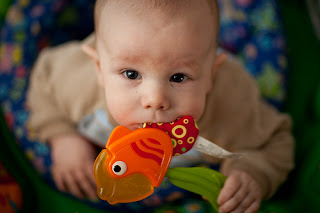What`s Diabetes?
Diabetes mellitus is one of the most
popular metabolic diseases. Its name derives from the Greek and it means “to go
across” just because sugar goes across kidneys and it mixes with urine.
People who have diabetes can`t use insulin well and so their blood glucose
level goes up. Besides, they have problems in regulating carbohydrate and fat
metabolism in the body.
Different Types:
Type 1
diabetes is a lifelong condition in which the body can't control levels of
glucose in the blood. It develops when the body can’t produce the hormone
insulin. Type 1 diabetes is sometimes called insulin-dependent diabetes and is
most commonly developed during childhood.
Diabetes
mellitus type 2, which was called “non insulin-addicted diabetes”, develops
when the body doesn`t produce enough insulin to maintain a normal blood glucose
level or when it can`t use insulin. This one is genetic and it manifests itself
in old patients that usually have also other problems like: obesity, high blood
pressure and heart diseases.
It is widely
speculated that diabetes occurred when inherited genetic characteristics are
triggered by environmental factors such as diet or exercise. Although there is
no specific diabetes causes, the following triggers may be involved:
- Viral or bacterial infection
- Chemical toxins within food
- Unidentified component causing autoimmune reaction
Diabetes
in children:
Type 1 diabetes is the most common form of diabetes in children: 90-95
per cent of under 16s with diabetes have this type.
Some studies made by the Queen`s
University of Belfast and by the Pecs University said that in 2020 children
under 5 affected by diabetes will double! Causes of the growth of them are: bad
alimentary habits, highest weight and height at the birth and caesarian births.
Diabetes in children could not be only linked with genetic factors. Many
scientists think it could be connected with imbalances during the gestation;
that`s why it`s important that the mother follows a correct diet during the
pregnancy. Gestational diabetes appears
unexpectedly and symptoms are: continuing thirst, tendency to urinate more, to
get fat and an increase on the amniotic liquid.
How to keep children diabetes under control:
Living with diabetes can put families under considerable strain, so
access to backup support is crucial. This may be from your GP, the hospital
team or social services. Online communities such as Children with Diabetes UK,
provides parents with access to other parents who are raising children with
diabetes.
To keep
diabetes under control you have to:
- Check regularly his/her blood glucose level;
- Pay
attention on food and sport;
- Help your
child to inject insulin;
- Find out when your child feels sick.
It`s very
important that your child learn about diabetes and that you make him/her
understand that to be diabetic doesn`t mean to be different from others. So, if
he/she made you some questions about diabetes you have to answer him/her
specifically. Don`t be afraid: your child will be more reassured this way.
Diabetic children diet:
Parents must be aware that children with diabetes have diet
restrictions, and that their activity levels need to be closely monitored. The
key to taking care of diabetes is to keep blood glucose as close to normal as
possible. The best way to do this is to:
- Make healthy food choices
- Eat the right amounts of food
- Be active everyday
- Stay at a healthy weight
- Take your medicines and check your blood glucose as planned with your health care team.
1.
GRAINS,
BEANS, AND STARCHY (6 or more servings a day)
2. VEGETABLES
(3 - 5 servings a day)
3. FRUITS (2 -
4 servings a day)
4.
MILK (2 - 3
servings a day)
5. MEAT AND
FISH (2 - 3 servings a day)
6. FATS, ALCOHOL, AND SWEETS (in
general, you should limit them)








